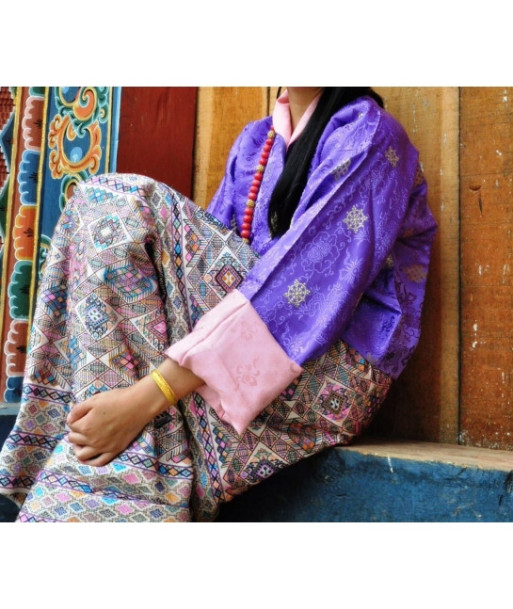

Kushuthara Kira
The **Kushuthara kera** (also spelled **Kushuthara** or **Kushuthara Kira**) is a traditional Bhutanese garment for women, renowned for its intricate design and cultural significance. This garment is particularly associated with formal occasions and is a symbol of Bhutanese heritage.
 Security policy
Security policy
(edit with the Customer Reassurance module)
 Delivery policy
Delivery policy
(edit with the Customer Reassurance module)
 Return policy
Return policy
(edit with the Customer Reassurance module)
The **Kushuthara kera** (also spelled **Kushuthara** or **Kushuthara Kira**) is a traditional Bhutanese garment for women, renowned for its intricate design and cultural significance. This garment is particularly associated with formal occasions and is a symbol of Bhutanese heritage.
### Key Features of Kushuthara Kera:
1. **Design and Fabric**:
- **Intricate Weaving**: Kushuthara kera is known for its elaborate handwoven patterns, often incorporating motifs that are symbolic and traditional. The weaving technique involves complex patterns and fine details that reflect Bhutanese artistry.
- **Fabric**: The fabric used is typically silk or a high-quality blend that is both durable and elegant. The silk used in Kushuthara is often handwoven, adding to the garment's luxury and uniqueness.
2. **Color and Patterns**:
- **Vibrant Colors**: The kera is often made in rich, vibrant colors, with gold and silver threads used to enhance the design. Traditional colors and patterns reflect Bhutanese cultural themes and regional styles.
- **Symbolic Patterns**: The patterns on the Kushuthara can include traditional Bhutanese motifs, such as dragons, lotus flowers, or intricate geometric designs, each carrying specific cultural or religious significance.
3. **Components**:
- **Kira**: The kera typically includes a kira, which is a long, wrap-around dress worn over a blouse (wonju). The kira is held together with a brocade belt and is wrapped around the body to form a traditional Bhutanese dress.
- **Accessories**: The Kushuthara kera is often paired with traditional Bhutanese accessories, such as a pendant (joma), ornate jewelry, and a decorative scarf (kabney), adding to its formal appearance.
4. **Occasions and Wear**:
- **Formal Events**: The Kushuthara kera is worn during formal events, religious ceremonies, and special occasions in Bhutanese culture. It is considered a prestigious garment that signifies respect for tradition and cultural heritage.
- **Cultural Significance**: Wearing a Kushuthara kera is a way to honor Bhutanese traditions and showcase the craftsmanship of Bhutanese textiles. It is often worn with pride during important ceremonies and celebrations.
5. **Craftsmanship and Tradition**:
- **Handwoven Artistry**: The creation of Kushuthara involves meticulous handweaving, which is a skill passed down through generations. The artistry involved in making these garments is highly valued in Bhutanese culture.
- **Regional Variations**: There can be variations in design and style depending on the region within Bhutan, reflecting local traditions and artistic preferences.
### Benefits:
- **Cultural Preservation**: Wearing a Kushuthara kera helps in preserving and promoting Bhutanese cultural heritage and traditional craftsmanship.
- **Elegance and Formality**: The garment is both elegant and formal, making it suitable for significant cultural events and ceremonies.
- **Craftsmanship**: The intricate design and handwoven quality of the Kushuthara kera are a testament to Bhutanese textile craftsmanship and artistic skill.
In summary, the Kushuthara kera is a beautiful and culturally significant garment for women in Bhutan. Its intricate designs, high-quality fabric, and traditional craftsmanship make it a treasured piece of Bhutanese heritage, worn with pride during important cultural and formal occasions.



